Bert和LSTM:情绪分类中的表现
一、说明
这篇文章的目的是评估和比较 2 种深度学习算法(BERT 和 LSTM)在情感分析中进行二元分类的性能。评估将侧重于两个关键指标:准确性(衡量整体分类性能)和训练时间(评估每种算法的效率)。
二、数据
为了实现这一目标,我使用了IMDB数据集,其中包括50,000条电影评论。数据集平均分为 25,000 条正面评论和 25,000 条负面评论,使其适用于训练和测试二进制情绪分析模型。若要获取数据集,请转到以下链接:
50K电影评论的IMDB数据集
大型影评数据集
www.kaggle.com
下图显示了数据集的五行。我给积极情绪分配了 1,给消极情绪分配了 0。
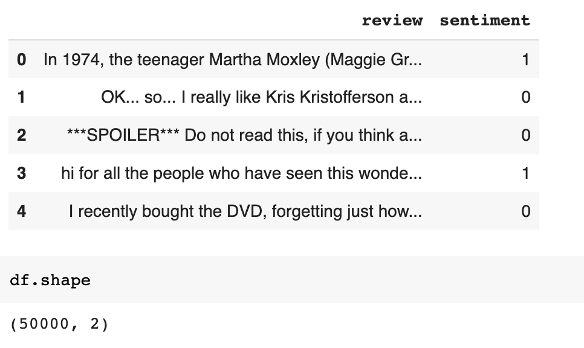
三、算法
1. 长短期记忆(LSTM):它是一种循环神经网络(RNN),旨在处理顺序数据。它可以通过使用存储单元和门来捕获长期依赖关系。
2. BERT(来自变压器的双向编码器表示):它是一种预先训练的基于变压器的模型,使用自监督学习方法。利用双向上下文来理解句子中单词的含义。
-配置
对于 LSTM,模型采用文本序列以及每个序列的相应长度作为输入。它嵌入文本(嵌入维度 = 20),通过 LSTM 层(大小 = 64)处理文本,通过 ReLU 激活的全连接层传递最后一个隐藏状态,最后应用 S 形激活以生成 0 到 1 之间的单个输出值。(周期数:10,学习率:0.001,优化器:亚当)
对于BERT,我使用了DistilBertForSequenceClassification,它基于DistilBERT架构。DistilBERT是原始BERT模型的较小,蒸馏版本。它旨在具有较少数量的参数并降低计算复杂性,同时保持相似的性能水平。(周期数:3,学习率:5e-5,优化器:亚当)
四、LSTM 代码
!pip install torchtext!pip install portalocker>=2.0.0import torch
import torch.nn as nnfrom torchtext.datasets import IMDB
from torch.utils.data.dataset import random_split# Step 1: load and create the datasetstrain_dataset = IMDB(split='train')
test_dataset = IMDB(split='test')# Set random number to 123 to compare with BERT model
torch.manual_seed(123)
train_dataset, valid_dataset = random_split(list(train_dataset), [20000, 5000])## Step 2: find unique tokens (words)
import re
from collections import Counter, OrderedDicttoken_counts = Counter()def tokenizer(text):text = re.sub('<[^>]*>', '', text)emoticons = re.findall('(?::|;|=)(?:-)?(?:\)|\(|D|P)', text.lower())text = re.sub('[\W]+', ' ', text.lower()) +\' '.join(emoticons).replace('-', '')tokenized = text.split()return tokenizedfor label, line in train_dataset:tokens = tokenizer(line)token_counts.update(tokens)print('Vocab-size:', len(token_counts))## Step 3: encoding each unique token into integers
from torchtext.vocab import vocabsorted_by_freq_tuples = sorted(token_counts.items(), key=lambda x: x[1], reverse=True)
ordered_dict = OrderedDict(sorted_by_freq_tuples)vocab = vocab(ordered_dict)'''
The special tokens "<pad>" and "<unk>" are inserted into the vocabulary using vocab.insert_token("<pad>", 0) and vocab.insert_token("<unk>", 1) respectively.
The index 0 is assigned to "<pad>" token, which is typically used for padding sequences.
The index 1 is assigned to "<unk>" token, which represents unknown or out-of-vocabulary tokens.vocab.set_default_index(1) sets the default index of the vocabulary to 1, which corresponds to the "<unk>" token.
This means that if a token is not found in the vocabulary, it will be mapped to the index 1 by default.
'''vocab.insert_token("<pad>", 0)
vocab.insert_token("<unk>", 1)
vocab.set_default_index(1)print([vocab[token] for token in ['this', 'is', 'an', 'example']])'''
The IMDB class in datatext contains 1 = negative and 2 = positive
''''''
The label_pipeline lambda function takes a label value x as input.
It checks if the label value x is equal to 2 using the comparison x == 2.
If the condition is true, it returns a float value of 1.0. This implies that the label is positive.
If the condition is false (i.e., the label value is not equal to 2), it returns a float value of 0.0. This implies that the label is negative.
'''text_pipeline = lambda x: [vocab[token] for token in tokenizer(x)]
label_pipeline = lambda x: 1. if x == 2 else 0'''
This line suggests that the subsequent computations and tensors will be moved to the specified CUDA device for processing,
taking advantage of GPU acceleration if available.
'''device = torch.device("cuda:0")## Step 3-B: wrap the encode and transformation function'''
Instead of loading the whole reviews into memory which is way too expensive for the computer,
you can load a batch for manuy times which requires way less memory as compared to loading the complete data set.
Another reason that we use batch is that if we load the whole dataset at once, the deep learning algorithm(may be a neural network)
has to store errors values for all data points in the memory and this will cause a great decrease in speed of training.
With batches, the model updates the parameters(weights and bias) only after passing through the whole data set.
'''def collate_batch(batch):label_list, text_list, lengths = [], [], []for _label, _text in batch:label_list.append(label_pipeline(_label))processed_text = torch.tensor(text_pipeline(_text),dtype=torch.int64)text_list.append(processed_text)lengths.append(processed_text.size(0))## Convert lists to tensorslabel_list = torch.tensor(label_list)lengths = torch.tensor(lengths)## pads the text sequences in text_list to have the same length by adding padding tokens.padded_text_list = nn.utils.rnn.pad_sequence(text_list, batch_first=True)return padded_text_list.to(device), label_list.to(device), lengths.to(device)## Take a small batch to check if the wrapping worksfrom torch.utils.data import DataLoader
dataloader = DataLoader(train_dataset, batch_size=4, shuffle=False, collate_fn=collate_batch)
text_batch, label_batch, length_batch = next(iter(dataloader))
print(text_batch)
print(label_batch)
print(length_batch)
print(text_batch.shape)## Step 4: batching the datasetsbatch_size = 32train_dl = DataLoader(train_dataset, batch_size=batch_size,shuffle=True, collate_fn=collate_batch)
valid_dl = DataLoader(valid_dataset, batch_size=batch_size,shuffle=False, collate_fn=collate_batch)
test_dl = DataLoader(test_dataset, batch_size=batch_size,shuffle=False, collate_fn=collate_batch)print(len(list(train_dl.dataset)))
print(len(list(valid_dl.dataset)))
print(len(list(test_dl.dataset)))'''
the code defines an RNN model that takes encoded text inputs,
processes them through an embedding layer and an LSTM layer,
and produces a binary output using fully connected layers and a sigmoid activation function.
The model is initialized with specific parameters and moved to the specified device for computation.
'''class RNN(nn.Module):def __init__(self, vocab_size, embed_dim, rnn_hidden_size, fc_hidden_size):super().__init__()self.embedding = nn.Embedding(vocab_size,embed_dim,padding_idx=0)self.rnn = nn.LSTM(embed_dim, rnn_hidden_size,batch_first=True)self.fc1 = nn.Linear(rnn_hidden_size, fc_hidden_size)self.relu = nn.ReLU()self.fc2 = nn.Linear(fc_hidden_size, 1)self.sigmoid = nn.Sigmoid()def forward(self, text, lengths):out = self.embedding(text)out = nn.utils.rnn.pack_padded_sequence(out, lengths.cpu().numpy(), enforce_sorted=False, batch_first=True)out, (hidden, cell) = self.rnn(out)out = hidden[-1, :, :]out = self.fc1(out)out = self.relu(out)out = self.fc2(out)out = self.sigmoid(out)return outvocab_size = len(vocab)
embed_dim = 20
rnn_hidden_size = 64
fc_hidden_size = 64torch.manual_seed(123)
model = RNN(vocab_size, embed_dim, rnn_hidden_size, fc_hidden_size)
model = model.to(device)def train(dataloader):model.train()total_acc, total_loss = 0, 0for text_batch, label_batch, lengths in dataloader:optimizer.zero_grad()pred = model(text_batch, lengths)[:, 0]loss = loss_fn(pred, label_batch)loss.backward()optimizer.step()total_acc += ((pred>=0.5).float() == label_batch).float().sum().item()total_loss += loss.item()*label_batch.size(0)return total_acc/len(dataloader.dataset), total_loss/len(dataloader.dataset)def evaluate(dataloader):model.eval()total_acc, total_loss = 0, 0with torch.no_grad():for text_batch, label_batch, lengths in dataloader:pred = model(text_batch, lengths)[:, 0]loss = loss_fn(pred, label_batch.float()) # Convert label_batch to Floattotal_acc += ((pred >= 0.5).float() == label_batch).float().sum().item()total_loss += loss.item() * label_batch.size(0)return total_acc/len(list(dataloader.dataset)),\total_loss/len(list(dataloader.dataset))import time
start_time = time.time()loss_fn = nn.BCELoss()
optimizer = torch.optim.Adam(model.parameters(), lr=0.001)num_epochs = 10torch.manual_seed(123)for epoch in range(num_epochs):acc_train, loss_train = train(train_dl)acc_valid, loss_valid = evaluate(valid_dl)print(f'Epoch {epoch} accuracy: {acc_train:.4f} val_accuracy: {acc_valid:.4f}')print(f'Time elapsed: {(time.time() - start_time)/60:.2f} min')
print(f'Total Training Time: {(time.time() - start_time)/60:.2f} min')acc_test, _ = evaluate(test_dl)
print(f'test_accuracy: {acc_test:.4f}')"""### Test with new movie reviews of Spider-Man: Across the Spider-Verse (2023)"""def collate_single_text(text):processed_text = torch.tensor(text_pipeline(text), dtype=torch.int64)length = processed_text.size(0)padded_text = nn.utils.rnn.pad_sequence([processed_text], batch_first=True)return padded_text.to(device), lengthtext = "It is the first marvel movie to make me shed a tear. It has heart, it feels so alive with it's conveyance of emotions and feelings, it uses our nostalgia for the first movie AGAINST US it is on a completely new level of animation, there is a twist on every turn you make while watching this movie. "
padded_text, length = collate_single_text(text)
padded_text = padded_text.to(device)model.eval() # Set the model to evaluation mode
with torch.no_grad():encoded_text = padded_text.to(device) # Move the encoded_text tensor to the CUDA devicelengths = torch.tensor([len(encoded_text)]) # Compute the length of the text sequenceoutput = model(encoded_text, lengths) # Pass the lengths argumentprobability = output.item() # Obtain the predicted probabilityif probability >= 0.5:prediction = "Positive"else:prediction = "Negative"print(f"Text: {text}")
print(f"Prediction: {prediction} (Probability: {probability})")text = "This movie was very boring and garbage this is why Hollywood has zero imagination. They rewrote Spiderman as Miles Morales so that they can fit the DEI agenda which was more important than time. "
padded_text, length = collate_single_text(text)
padded_text = padded_text.to(device)model.eval() # Set the model to evaluation mode
with torch.no_grad():encoded_text = padded_text.to(device) # Move the encoded_text tensor to the CUDA devicelengths = torch.tensor([len(encoded_text)]) # Compute the length of the text sequenceoutput = model(encoded_text, lengths) # Pass the lengths argumentprobability = output.item() # Obtain the predicted probabilityif probability >= 0.5:prediction = "Positive"else:prediction = "Negative"print(f"Text: {text}")
print(f"Prediction: {prediction} (Probability: {probability})")五、BERT代码
!pip install transformersimport gzip
import shutil
import timeimport pandas as pd
import requests
import torch
import torch.nn.functional as F
import torchtextimport transformers
from transformers import DistilBertTokenizerFast
from transformers import DistilBertForSequenceClassificationtorch.backends.cudnn.deterministic = True
RANDOM_SEED = 123
torch.manual_seed(RANDOM_SEED)
DEVICE = torch.device('cuda' if torch.cuda.is_available() else 'cpu')NUM_EPOCHS = 3path = '/content/drive/MyDrive/data/movie_data.csv'df = pd.read_csv(path)df.head()df.shapetrain_texts = df.iloc[:35000]['review'].values
train_labels = df.iloc[:35000]['sentiment'].valuesvalid_texts = df.iloc[35000:40000]['review'].values
valid_labels = df.iloc[35000:40000]['sentiment'].valuestest_texts = df.iloc[40000:]['review'].values
test_labels = df.iloc[40000:]['sentiment'].valuestokenizer = DistilBertTokenizerFast.from_pretrained('distilbert-base-uncased')train_encodings = tokenizer(list(train_texts), truncation=True, padding=True)
valid_encodings = tokenizer(list(valid_texts), truncation=True, padding=True)
test_encodings = tokenizer(list(test_texts), truncation=True, padding=True)train_encodings[0]class IMDbDataset(torch.utils.data.Dataset):def __init__(self, encodings, labels):self.encodings = encodingsself.labels = labelsdef __getitem__(self, idx):item = {key: torch.tensor(val[idx]) for key, val in self.encodings.items()}item['labels'] = torch.tensor(self.labels[idx])return itemdef __len__(self):return len(self.labels)train_dataset = IMDbDataset(train_encodings, train_labels)
valid_dataset = IMDbDataset(valid_encodings, valid_labels)
test_dataset = IMDbDataset(test_encodings, test_labels)train_loader = torch.utils.data.DataLoader(train_dataset, batch_size=16, shuffle=True)
valid_loader = torch.utils.data.DataLoader(valid_dataset, batch_size=16, shuffle=False)
test_loader = torch.utils.data.DataLoader(test_dataset, batch_size=16, shuffle=False)model = DistilBertForSequenceClassification.from_pretrained('distilbert-base-uncased')
model.to(DEVICE)
model.train()optim = torch.optim.Adam(model.parameters(), lr=5e-5)def compute_accuracy(model, data_loader, device):with torch.no_grad():correct_pred, num_examples = 0, 0for batch_idx, batch in enumerate(data_loader):### Prepare datainput_ids = batch['input_ids'].to(device)attention_mask = batch['attention_mask'].to(device)labels = batch['labels'].to(device)outputs = model(input_ids, attention_mask=attention_mask)logits = outputs['logits']predicted_labels = torch.argmax(logits, 1)num_examples += labels.size(0)correct_pred += (predicted_labels == labels).sum()return correct_pred.float()/num_examples * 100start_time = time.time()for epoch in range(NUM_EPOCHS):model.train()for batch_idx, batch in enumerate(train_loader):### Prepare datainput_ids = batch['input_ids'].to(DEVICE)attention_mask = batch['attention_mask'].to(DEVICE)labels = batch['labels'].to(DEVICE)### Forwardoutputs = model(input_ids, attention_mask=attention_mask, labels=labels)loss, logits = outputs['loss'], outputs['logits']### Backwardoptim.zero_grad()loss.backward()optim.step()### Loggingif not batch_idx % 250:print (f'Epoch: {epoch+1:04d}/{NUM_EPOCHS:04d} | 'f'Batch {batch_idx:04d}/{len(train_loader):04d} | 'f'Loss: {loss:.4f}')model.eval()with torch.set_grad_enabled(False):print(f'Training accuracy: 'f'{compute_accuracy(model, train_loader, DEVICE):.2f}%'f'\nValid accuracy: 'f'{compute_accuracy(model, valid_loader, DEVICE):.2f}%')print(f'Time elapsed: {(time.time() - start_time)/60:.2f} min')print(f'Total Training Time: {(time.time() - start_time)/60:.2f} min')
print(f'Test accuracy: {compute_accuracy(model, test_loader, DEVICE):.2f}%')六、结果

七、为什么BERT的性能优于LSTM?
BERT之所以获得高准确率,有几个原因:
1)BERT通过考虑给定单词两侧的周围单词来捕获单词的上下文含义。这种双向方法使模型能够理解语言的细微差别并有效地捕获单词之间的依赖关系。
2)BERT采用变压器架构,可有效捕获顺序数据中的长期依赖关系。转换器采用自我注意机制,使模型能够权衡句子中不同单词的重要性。这种注意力机制有助于BERT专注于相关信息,从而获得更好的表示和更高的准确性。
3)BERT在大量未标记的数据上进行预训练。这种预训练允许模型学习一般语言表示,并获得对语法、语义和世界知识的广泛理解。通过利用这些预训练的知识,BERT可以更好地适应下游任务并实现更高的准确性。
八、结论
与 LSTM 相比,BERT 确实需要更长的时间来微调,因为它的架构更复杂,参数空间更大。但同样重要的是要考虑到BERT在许多任务中的性能优于LSTM。 达门·
相关文章:

Bert和LSTM:情绪分类中的表现
一、说明 这篇文章的目的是评估和比较 2 种深度学习算法(BERT 和 LSTM)在情感分析中进行二元分类的性能。评估将侧重于两个关键指标:准确性(衡量整体分类性能)和训练时间(评估每种算法的效率)。…...

【面试经典150题】跳跃游戏
题目链接 给你一个非负整数数组 nums ,你最初位于数组的 第一个下标 。数组中的每个元素代表你在该位置可以跳跃的最大长度。 判断你是否能够到达最后一个下标,如果可以,返回 true ;否则,返回 false 。 1 < nums…...

【Rust】003-基础语法:流程控制
【Rust】003-基础语法:流程控制 文章目录 【Rust】003-基础语法:流程控制一、概述二、if 表达式1、语法格式2、多个3、获取表达式的值 三、循环1、loop:无限循环,可跳出无限循环跳出循环返回值 2、while:条件循环&…...
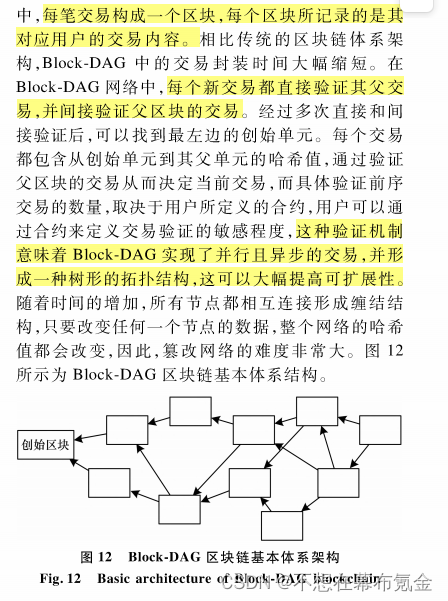
0829【综述】面向时空数据的区块链研究综述
摘要:时空数据包括时间和空间2个维度,常被应用于物流、供应链等领域。传统的集中式存储方式虽然具有一定的便捷性,但不能充分满足时空数据存储及查询等要求,而区块链技术采用去中心化的分布式存储机制,并通过共识协议来保证数据的安全性。研究现有区块链1.0、2.0和以Block-DAG为…...

MySQL高级篇(SQL优化、索引优化、锁机制、主从复制)
目录 0 存储引擎介绍1 SQL性能分析2 常见通用的JOIN查询 SQL执行加载顺序七种JOIN写法3 索引介绍 3.1 索引是什么3.2 索引优劣势3.3 索引分类和建索引命令语句3.4 索引结构与检索原理3.5 哪些情况适合建索引3.6 哪些情况不适合建索引4 性能分析 4.1 性能分析前提知识4.2 Expla…...
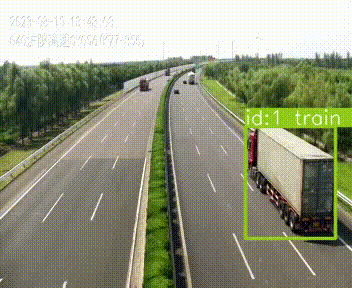
YOLOV8模型使用-检测-物体追踪
这个最新的物体检测模型,很厉害的样子,还有物体追踪的功能。 有官方的Python代码,直接上手试试就好,至于理论,有想研究在看论文了╮(╯_╰)╭ 简单介绍 YOLOv8 中可用的模型 YOLOv8 模型的每个类别中有五个模型用于检…...

springmvc:设置后端响应给前端的json数据转换成String格式
设置spring-mvc.xml: xml <?xml version"1.0" encoding"UTF-8"?> <beans xmlns"http://www.springframework.org/schema/beans"xmlns:context"http://www.springframework.org/schema/context"xmlns:xsi"http://www.w…...

Mac安装brew、mysql、redis
mac安装brew mac安装brewmac安装mysql并配置开机启动mac安装redis并配置开机启动 mac安装brew 第一步:执行. /bin/bash -c "$(curl -fsSL https://raw.githubusercontent.com/Homebrew/install/HEAD/install.sh)"第二步:输入开机密码 第三…...
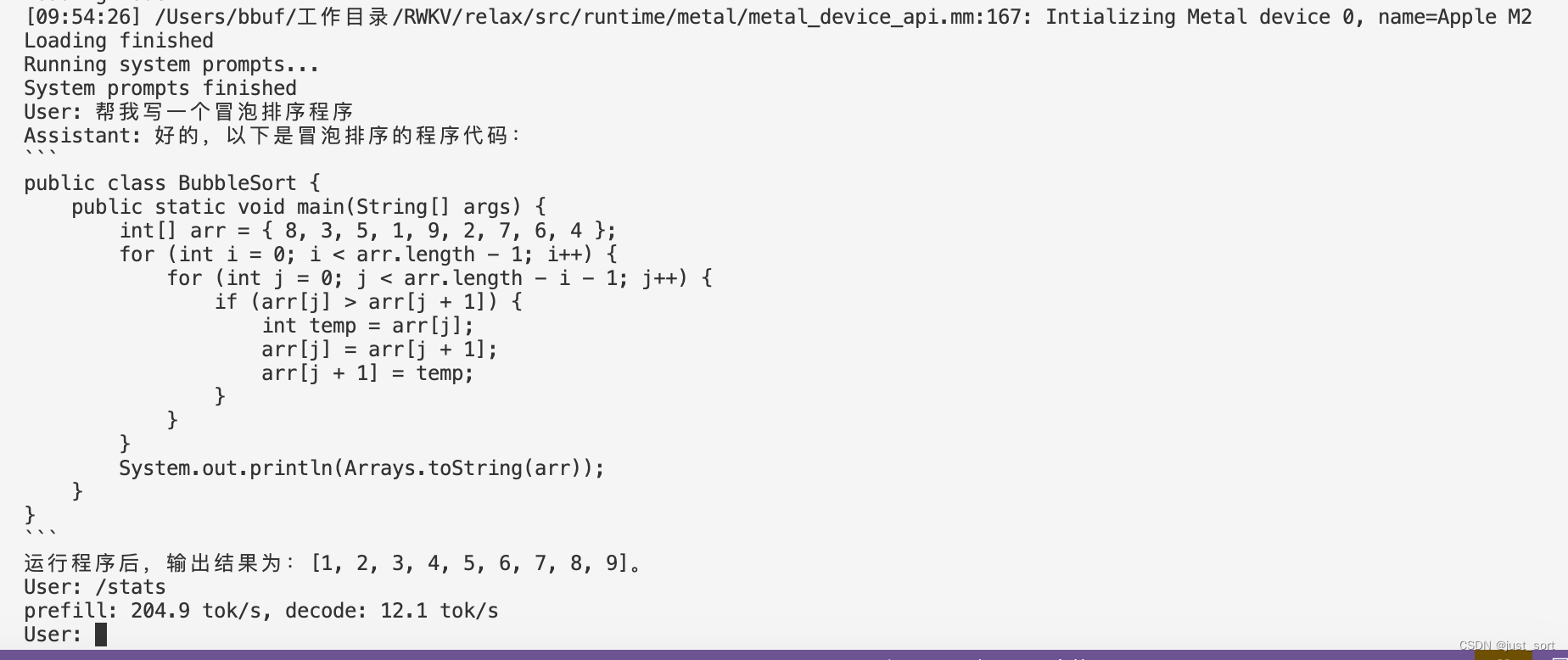
MLC-LLM 部署RWKV World系列模型实战(3B模型Mac M2解码可达26tokens/s)
0x0. 前言 我的 ChatRWKV 学习笔记和使用指南 这篇文章是学习RWKV的第一步,然后学习了一下之后决定自己应该做一些什么。所以就在RWKV社区看到了这个将RWKV World系列模型通过MLC-LLM部署在各种硬件平台的需求,然后我就开始了解MLC-LLM的编译部署流程和…...

Unity 之 参数类型之值类型参数的用法
文章目录 基本数据类型结构体结构体的进一步补充 总结: 当谈论值类型参数时,我们可以从基本数据类型和结构体两个方面详细解释。值类型参数指的是以值的形式传递给函数或方法的数据,而不是引用。 基本数据类型 基本数据类型的值类型参数&…...
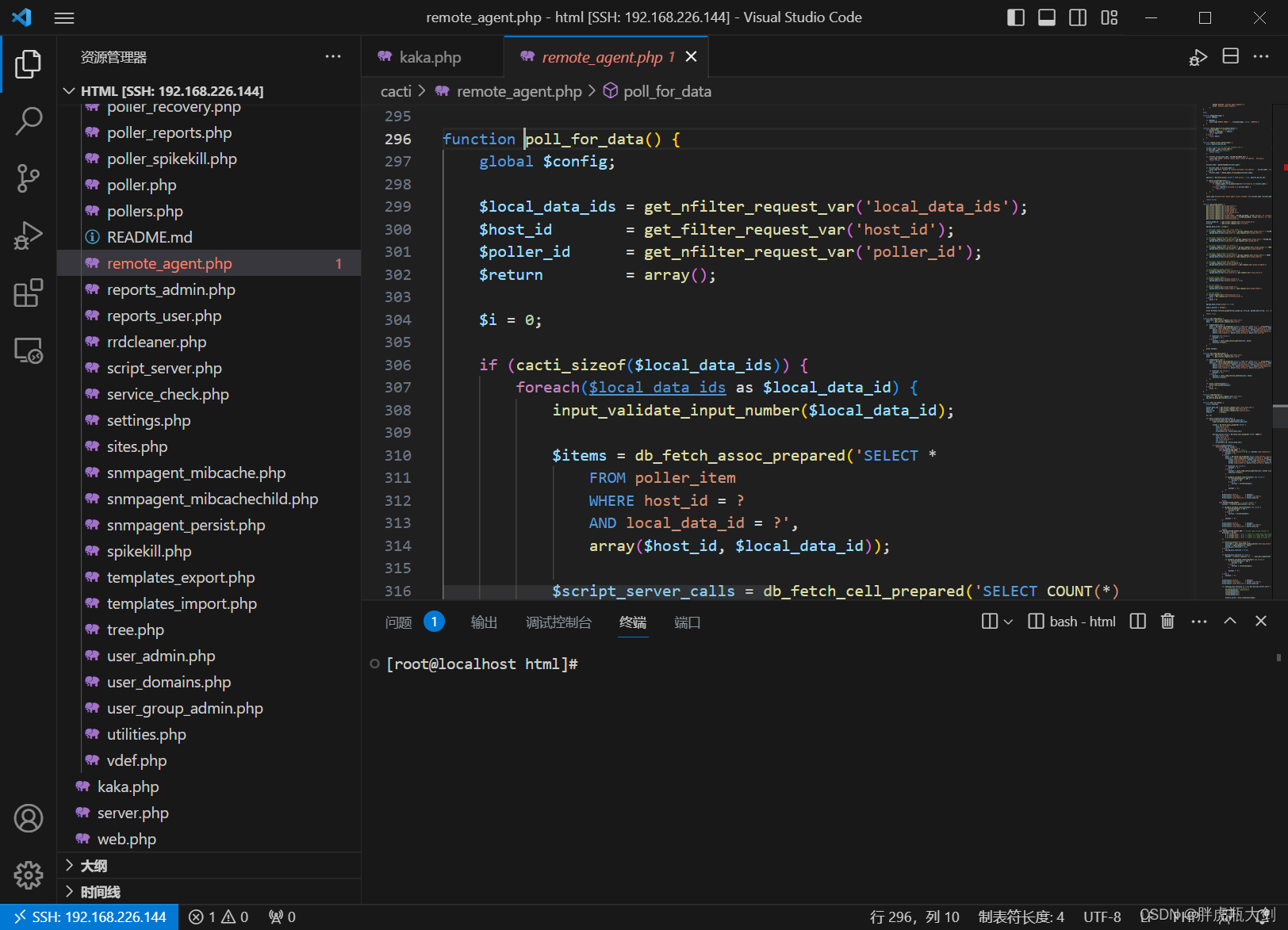
VScode远程连接主机
一、前期准备 1、Windows安装VSCode; 2、在VSCode中安装PHP Debug插件; 3、安装好Docker 4、在容器中安装Xdebug ①写一个展现phpinfo的php文件 <?php phpinfo(); ?>②在浏览器上打开该文件 ③复制所有信息丢到Xdebug: Installation instr…...

【iOS】属性关键字
文章目录 前言一、深拷贝与浅拷贝1、OC的拷贝方式有哪些2. OC对象实现的copy和mutableCopy分别为浅拷贝还是深拷贝?3. 自定义对象实现的copy和mutableCopy分别为浅拷贝还是深拷贝?4. 判断当前的深拷贝的类型?(区别是单层深拷贝还是完全深拷贝…...

【计算机基础】Git从安装到使用,详细每一步!扩展Github\Gitlab
📢:如果你也对机器人、人工智能感兴趣,看来我们志同道合✨ 📢:不妨浏览一下我的博客主页【https://blog.csdn.net/weixin_51244852】 📢:文章若有幸对你有帮助,可点赞 👍…...

深入了解Docker镜像操作
Docker是一种流行的容器化平台,它允许开发者将应用程序及其依赖项打包成容器,以便在不同环境中轻松部署和运行。在Docker中,镜像是构建容器的基础,有些家人们可能在服务器上对docker镜像的操作命令不是很熟悉,本文将深…...

嵌入式开发-单片机学习介绍
一、单片机入门篇 单片机的定义和历史 单片机是一种集成了微处理器、存储器、输入输出接口和其他功能于一体的微型计算机,具有高度的集成性和便携性。单片机的历史可以追溯到20世纪70年代,随着微电子技术的不断发展,单片机逐渐成为了工业控…...
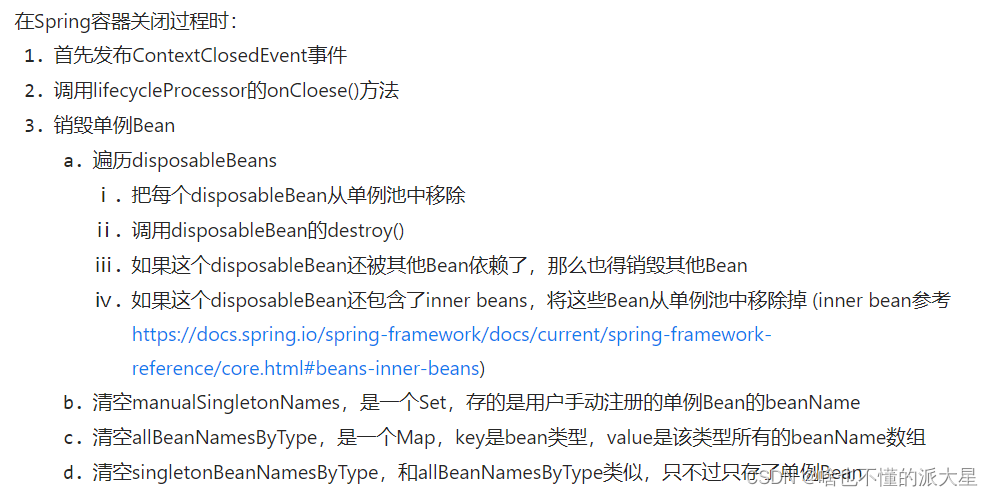
5、Spring之Bean生命周期源码解析(销毁)
Bean的销毁过程 Bean销毁是发送在Spring容器关闭过程中的。 在Spring容器关闭时,比如: AnnotationConfigApplicationContext context = new AnnotationConfigApplicationContext(AppConfig.class); UserService userService = (UserService) context.getBean("userSe…...

开发多点触控MFC应用程序
当下计算机变得越来越智能化,越来越无所不能,触摸屏的普及只是时间问题了。 虽然鼠标和键盘不会很快就离开人们的视野,毕竟人们使用鼠标跟键盘已经成为一种习惯,但是处理信息或者说操作计算机的其他方法也层出不穷——比如触控技术…...

使用nlohmann json库进行序列化与反序列化
nlohmann源码仓库:https://github.com/nlohmann/json使用方式:将其nlohmann文件夹加入,包含其头文件json.hpp即可demo #include <iostream> #include "nlohmann/json.hpp" #include <vector>using json nlohmann::js…...
)
高教社杯数模竞赛特辑论文篇-2012年A题:葡萄酒的评价(附获奖论文)
目录 摘 要 一、问题重述 二、问题分析 2.1 问题一的分析 2.2 问题二的分析...

手写RPC——数据序列化工具protobuf
手写RPC——数据序列化工具protobuf Protocol Buffers(protobuf)是一种用于结构化数据序列化的开源库和协议。下面是 protobuf 的一些优点和缺点: 优点: 高效的序列化和反序列化:protobuf 使用二进制编码,…...

Ubuntu系统下交叉编译openssl
一、参考资料 OpenSSL&&libcurl库的交叉编译 - hesetone - 博客园 二、准备工作 1. 编译环境 宿主机:Ubuntu 20.04.6 LTSHost:ARM32位交叉编译器:arm-linux-gnueabihf-gcc-11.1.0 2. 设置交叉编译工具链 在交叉编译之前&#x…...

基于Uniapp开发HarmonyOS 5.0旅游应用技术实践
一、技术选型背景 1.跨平台优势 Uniapp采用Vue.js框架,支持"一次开发,多端部署",可同步生成HarmonyOS、iOS、Android等多平台应用。 2.鸿蒙特性融合 HarmonyOS 5.0的分布式能力与原子化服务,为旅游应用带来…...

服务器硬防的应用场景都有哪些?
服务器硬防是指一种通过硬件设备层面的安全措施来防御服务器系统受到网络攻击的方式,避免服务器受到各种恶意攻击和网络威胁,那么,服务器硬防通常都会应用在哪些场景当中呢? 硬防服务器中一般会配备入侵检测系统和预防系统&#x…...
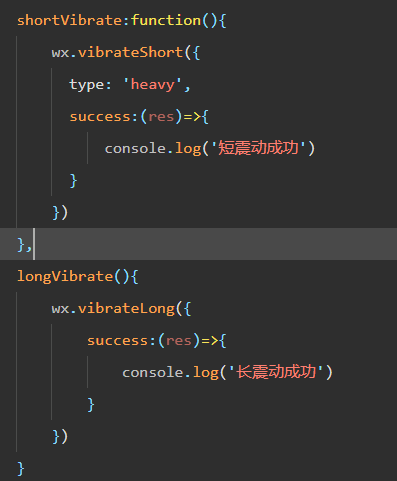
微信小程序 - 手机震动
一、界面 <button type"primary" bindtap"shortVibrate">短震动</button> <button type"primary" bindtap"longVibrate">长震动</button> 二、js逻辑代码 注:文档 https://developers.weixin.qq…...

C++ 基础特性深度解析
目录 引言 一、命名空间(namespace) C 中的命名空间 与 C 语言的对比 二、缺省参数 C 中的缺省参数 与 C 语言的对比 三、引用(reference) C 中的引用 与 C 语言的对比 四、inline(内联函数…...

数据链路层的主要功能是什么
数据链路层(OSI模型第2层)的核心功能是在相邻网络节点(如交换机、主机)间提供可靠的数据帧传输服务,主要职责包括: 🔑 核心功能详解: 帧封装与解封装 封装: 将网络层下发…...

06 Deep learning神经网络编程基础 激活函数 --吴恩达
深度学习激活函数详解 一、核心作用 引入非线性:使神经网络可学习复杂模式控制输出范围:如Sigmoid将输出限制在(0,1)梯度传递:影响反向传播的稳定性二、常见类型及数学表达 Sigmoid σ ( x ) = 1 1 +...
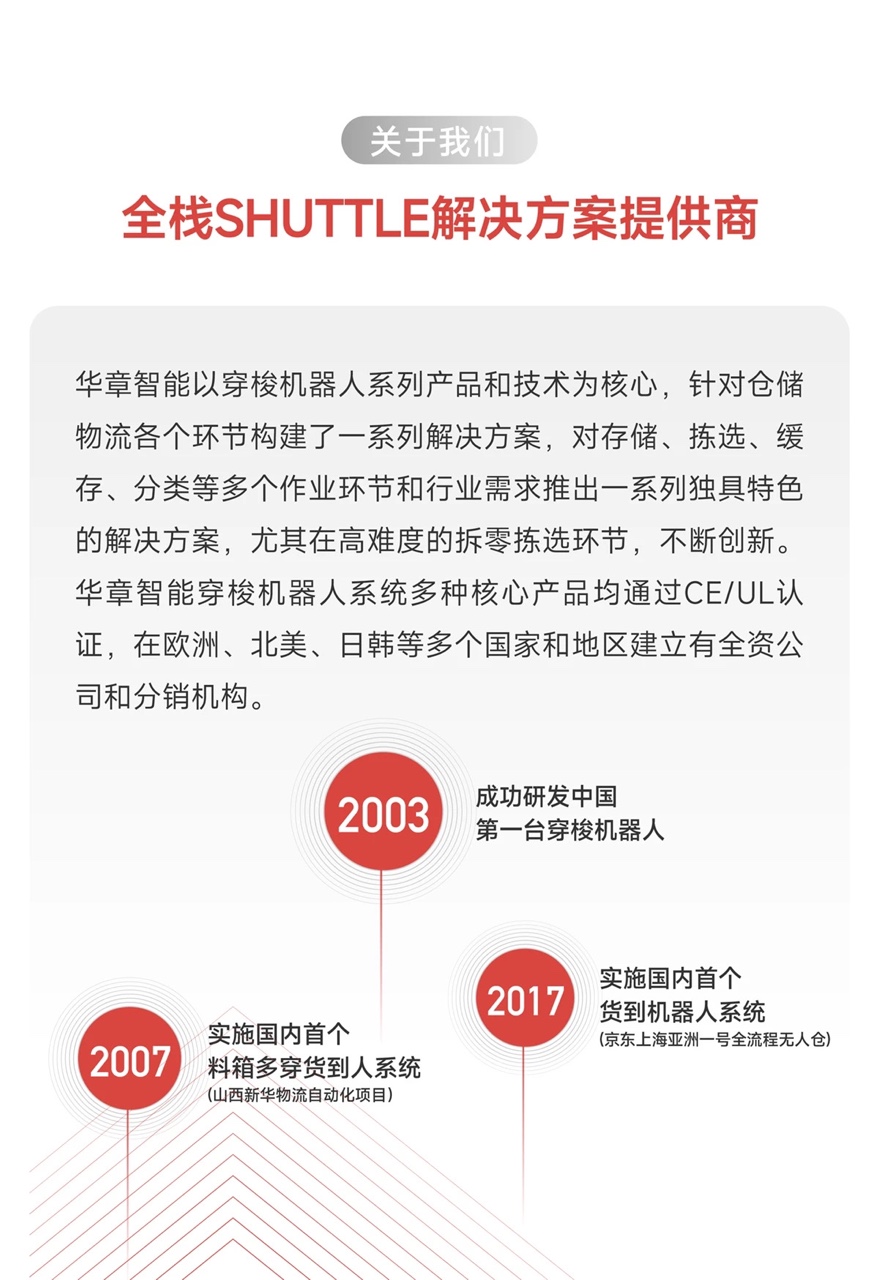
智能仓储的未来:自动化、AI与数据分析如何重塑物流中心
当仓库学会“思考”,物流的终极形态正在诞生 想象这样的场景: 凌晨3点,某物流中心灯火通明却空无一人。AGV机器人集群根据实时订单动态规划路径;AI视觉系统在0.1秒内扫描包裹信息;数字孪生平台正模拟次日峰值流量压力…...
)
OpenLayers 分屏对比(地图联动)
注:当前使用的是 ol 5.3.0 版本,天地图使用的key请到天地图官网申请,并替换为自己的key 地图分屏对比在WebGIS开发中是很常见的功能,和卷帘图层不一样的是,分屏对比是在各个地图中添加相同或者不同的图层进行对比查看。…...
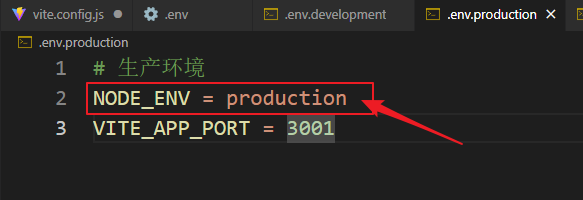
vue3+vite项目中使用.env文件环境变量方法
vue3vite项目中使用.env文件环境变量方法 .env文件作用命名规则常用的配置项示例使用方法注意事项在vite.config.js文件中读取环境变量方法 .env文件作用 .env 文件用于定义环境变量,这些变量可以在项目中通过 import.meta.env 进行访问。Vite 会自动加载这些环境变…...
